Wild about Waratahs
The New South Wales Waratah grows naturally in patches of sandy loam on ridges and plateaus in the Sydney geological basin, the Central and South Coast districts and the Blue Mountains of New South Wales.
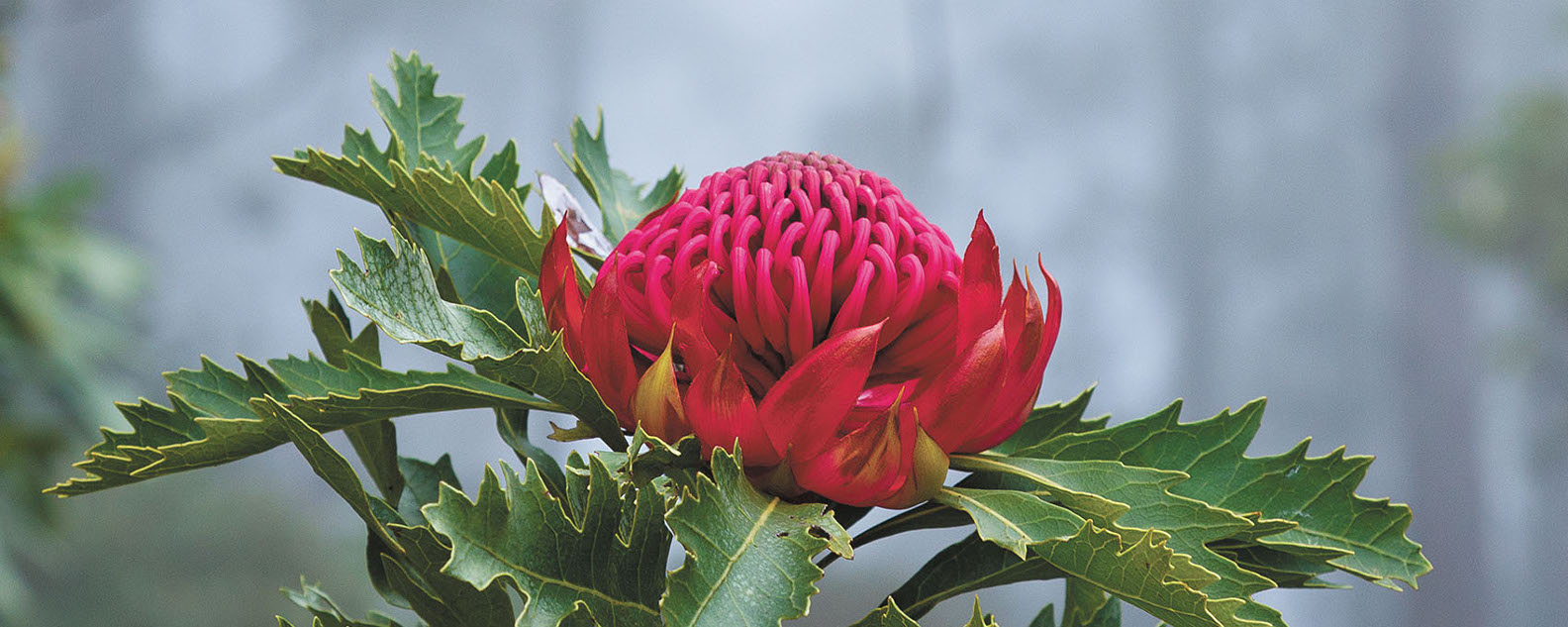
The New South Wales Waratah grows naturally in patches of sandy loam on ridges and plateaus in the Sydney geological basin, the Central and South Coast districts and the Blue Mountains of New South Wales. The New South Wales Waratah is not the only species of Telopea.
All the other species of waratah grow on Australia's eastern seaboard and have smaller and less spectacular blooms than Telopea speciosissima. They are the Gibraltar Range Waratah (Telopea aspera), the Braidwood Waratah (Telopea mongaensis), the Gippsland Waratah (Telopea oreades) and the Tasmanian Waratah (Telopea truncata). A number of cultivars are also available, such as ‘Wirrimbirra White’ and ‘Shady Lady’.
If you're looking for a shrub that will thrive in partial shade with morning sun, you can't go wrong with Waratahs.
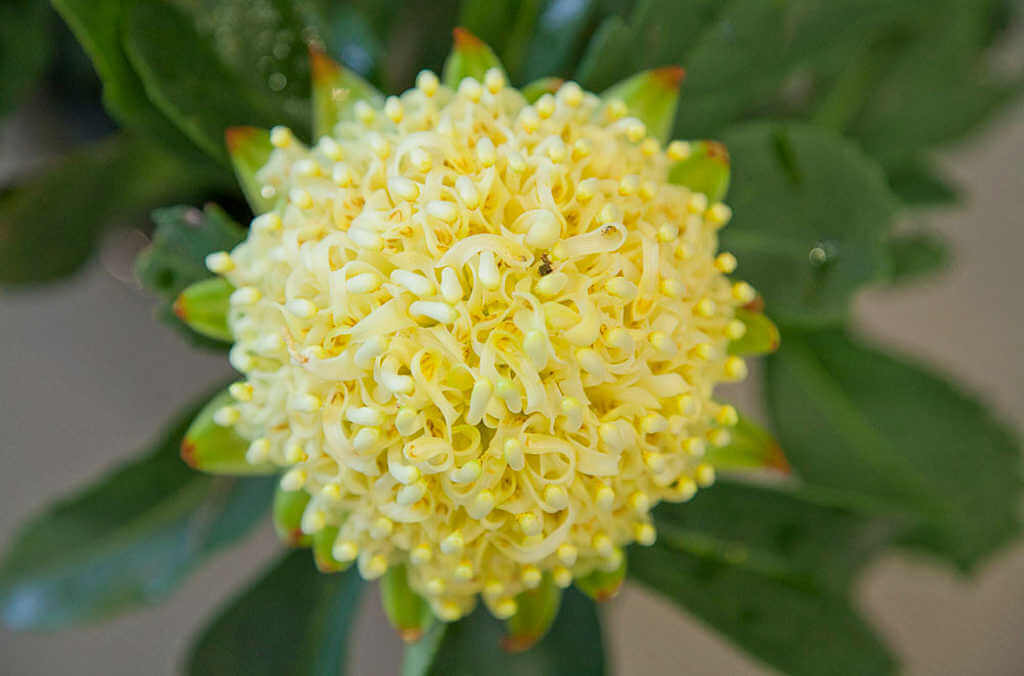
History
Waratahs feature in Aboriginal legend, like the D'harawal story about how the white waratah became red. The flexible, new-growth branches were used by early European settlers for basket making and by blacksmiths to wrap around their implements when working with hot iron.
The first written record of the plant’s Aboriginal name ‘Waratah’ which means ‘red-flowering tree,’ was made in the notebooks of the First Fleet's Lieutenant William Dawes. The botanical name ‘telopea’ means ‘seen from afar,’ and ‘speciosissima’ means 'most beautiful'.
The Protea family has been around for a very long time. Varieties have developed and changed significantly over the years and as result we now have about 80 genera and 1600 species. Due to the fact that varieties in the protea family can be found in many areas throughout South Africa, Australia, Southeast Asia, New Guinea, New Caledonia, New Zealand and Madagascar, there is strong belief that the family of plants spread throughout the southern hemisphere on fragments of the ancient supercontinent Gondwana when it split. The highest diversity is in Australia, followed by Africa.
Through the use of DNA sequence data, botanists have discovered that the Proteaceae family of plants lived on the ancient super continent Gondwana almost 120 million years ago. As the continent broke up, some of the varieties spread to countries we now know as Australia, South Africa, New Zealand and other southern hemisphere countries. However, some of the varieties are much too young to have been around when Gondwana split, therefore this group of plants has dispersed across oceans to create new varieties in this large plant family. The spectacular genus Protea is undoubtedly Gondwanan proven by the DNA sequence data.
This varied genus of plants is named for the sea-god of ancient Greek mythology, Proteus, who was known for his ability to change his appearance at will. It’s said that the proteaceae family was named after him because of the incredible variety of shapes, sizes and textures it presents itself in.
There are numerous Proteaceae genera however some are more well know than others; Aulax, Banksia, Brunia, Grevillea, Hakea, Leucadendron, Leucospermum, Macadamia, Mimetes, Serruria, Waratah and of course Protea.
The most well know protea is the King Protea which is also the national flower of South Africa.
What makes them all part of the same family despite looking so different, is their root system. These plants have proteiod roots which are a specialised root system which form clusters of closely spaced, short roots. They enhance nutrient uptake and as a result, plants with proteoid roots can grow in soil that is very low in nutrients.
The first recorded Protea cultivations can be dated back to 1910 in South Africa were large scale protea plantation were planted to provide cut flowers. By the 1970’s protea cultivation had taken off, Protea were being commercially cultivated in California, Israel, New Zealand, Australia, Hawaii, South Africa and Zimbabwe. This led to the formation of the International Protea Association.
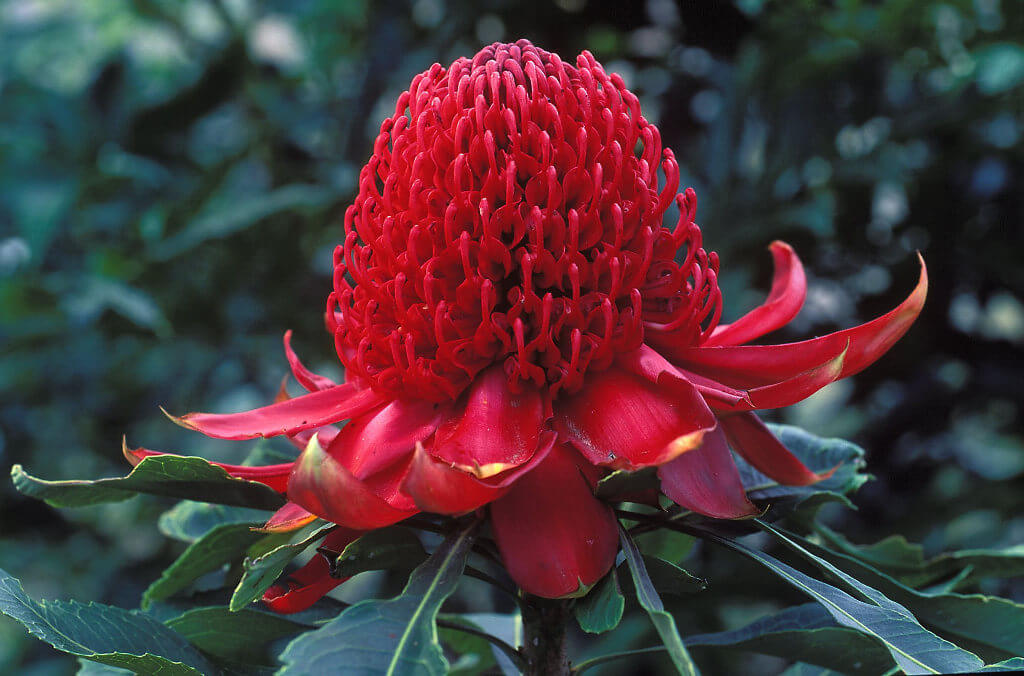
How to grow Waratahs
The New South Wales Waratah, Telopea speciosissima is a large, long-lived shrub or tree that generally grows to 3m in height.
After fires, which are common in its natural habitat, a Waratah can regenerate from a 'lignotuber' - a woody swelling of its stem that lies partly or wholly under the ground.
Waratahs should be planted at least 1.5m apart, or into very large pots (like a half wine barrel), in a partially shaded area that is able to receive morning sun.
Waratahs flower over a six-week period over spring in the Sydney region but they will flower later in cooler areas.
The size and shape of the blooms can vary considerably as can the range of naturally occurring colours, although the majority are red and pink. A commercially available white variety, known as 'Wirrimbirra White', is not a true white but a creamy yellow or greenish colour. The main pollinators of waratahs are birds, which are attracted by the copious amounts of nectar and bright colours.
As the bird seeks out the nectar, which is deep inside the waratah flower, its head becomes dusted with pollen from the upper part of the flower. It takes that pollen from one waratah plant to another and cross-pollinates another plant mixing genes which ensures genetic diversity from one generation to the next.
Waratahs make stunning cut flowers and by doing so you are naturaly pruning them which will give you heaps of flowers the following year. They can last two to three weeks in a vase if you keep the water fresh. Cut 20-30cm below the flowers and strip off the bottom leaves so they don't rot in the water to prep them for the vase.
For dried arrangements, flowers can be hung upside down in a dark place with some air circulation. This will help to retain more colour and prevent the growth of mould.
Cultivars
The blooms of the Gippsland Waratah are less compact than the New South Wales Waratah and their flowers open from the centre outwards.
Seedling plants take about five years to flower, while cuttings may take only two years. The easiest way to propagate waratahs is from seed, but it is also possible to strike them from cuttings. This is best done in spring or early summer when plants are actively growing.
Use pruning that have several sets of leaves and 15-20 cm long. Plant into an extremely free draining mix and keep them lightly watered until roots form about 4 to 6 weeks later. Cuttings are susceptible to fungal attack so try to achieve very sterile growing conditions to improve your chances of survival.
Placing your pot on a warm concrete pad might help root growth, and after six months you should have a successful batch of cuttings to plant out in autumn.
Please don’t pick waratahs when you see them growing in the bush. Apart from depriving others of the enjoyment of seeing them in their natural habitat, this practice depletes natural seed reserves and often results in poor quality blooms compared with those from well-cultivated plants.
The New South Wales Waratah was once abundant in many areas of the Sydney metropolitan area, and the species’ survival is now due to its existence in national parks, reserves and relatively inaccessible areas.
Seed pods take about six months to mature, at which time they turn brown and split open. Seeds are winged for wind dispersal and there may be more than 250 seeds on one flowerhead in a good year.
Sow seeds in a pot filled with a well-drained seed raising mix, cover with a fine layer of mix and water well. Transplant seedlings into a freely draining potting mix that does not contain any added nutrients and add some slow-release low phosphorus fertiliser several weeks later. Keep potted waratahs in partial shade, off the ground, for at least one year and make sure the roots are kept moist but not wet.
Growing guide
Partially shaded with morning sun is best, although Waratahs will grow in full sun.
In the Southern hemisphere, Waratahs will not survive on south facing walls. Transplant in autumn to a wind protected area if needed.
Dig a hole to twice the width of the pot. This allows and encourages the roots to expand into the space around them and begin to search for their own water and nutrients.
Waratahs are poor competitors and will not perform well close to most eucalypts, so should be planted away at least the distance of the height of a mature tree.
Frost
They are fairly frost tolerant once established. In winter they can generally handle frosts around minus 2 degrees Celsius, whilst some varieties are more hardy tolerating frosts of minus 6 degrees Celsius.
Drainage
The area where one proposes to plant Waratah should be tested for drainage by digging a hole the size of a bucket and filling the hole with water and observing the time it takes to drain away, if this is less than 5 minutes it is satisfactory and a good start.
Areas naturally growing bracken have grown Waratahs well in the past. If drainage is a problem, a raised bed or pot incorporating crushed sandstone may be an alternative.
Although they are reasonably tough, make sure you water your plant well after planting. Once established it’s important to water at least twice a week in the first summer and preferably daily when it's especially hot.
The soil around the roots should not completely dry out when the plant is young. You can gradually reduce watering as the plant becomes established- about 2 years after planting.
You can gently tease roots out to encourage them to grow into the surrounding soil. When planting, ensure your plant is not placed into the hole any deeper than it was in the pot. The top of the root ball should be level with the top of the garden bed.
Waratahs and other native plants are sensitive to phosphorus which is the base of most general fertilizers. We recommend you only plant in old flower beds if no phosphorus fertiliser has been previously used.
Waratahs are best grown away from plants which require regular feeding. Avoid mushroom composts as they contain salts harmful to Waratahs. It is also best to avoid applying blood and bone, manures and products made from them such as dynamic lifter, as the nutrient balance is not suitable for Waratahs.
Cultivated Waratahs require heavy pruning once established, as well as pruning off any weak stems. About 3/4 of the plant should be removed immediately after flowering to reinvigorate the plants. New shoots should flower the following year.
Bract browning occurs prior to Waratah harvest, caused by direct sun exposure. Considered to be the most serious impediment to the development of an export market for the product, we suggest using a shade cloth to protect plants from light damage.
Waratahs are susceptible to many pests and diseases. The most damaging are the root rot diseases, caused by the introduced Phytophthora fungus. This disease is characterised by desiccated light brown leaves and a withered stem.
Over- and under-watering and excessive use of fertiliser can predispose plants to these diseases. Be vigilant for insect infestations. Moth-borers, which bore into the flower buds and destroy the developing flowers, are most active during the autumn and winter months. White Palm Scale (Phenacaspis eugeniae) is active during warmer times of the year.
White Palm Scale, Pseudaulacaspis eugeniae (Maskell), is the common scale found in Waratahs in and around Sydney. This is also called Oleander Scale and Waratah Scale. It is a type of hard scale.
How to detect the presence of scales in a bush
When spots (discoloured patches) appear on the upper surface of leaves, the lower surface of leaves should be checked for the presence of the scales. Another indicator for the presence of scales is the presence of ants on the bush, particularly when the flowers are infested. The ants feed on the honey dew secreted by the scales as excreta, and they tend to congregate around the scales.
How to manage scales on Waratahs
- Biological. There are predators like ladybird beetles and which attack and feed on young and adult scales. There are also tiny wasps which parasitise scale insects. They pierce through the white armour of the adult females with their needle like ovipositor and lay their eggs into the fleshy bodies of the scales.
- Mechanical. If only few bushes are infested, scrubbing and scraping the plant surface where the scales are found will dislodge the scales. Once dislodged, they will starve and die as they dry out exposed to the air. Or use secateurs to cut off an affected branch.
- Chemical. Spraying affected plants with an approved pest oil will help to suffocate scale. Repeat sprays will be necessary.
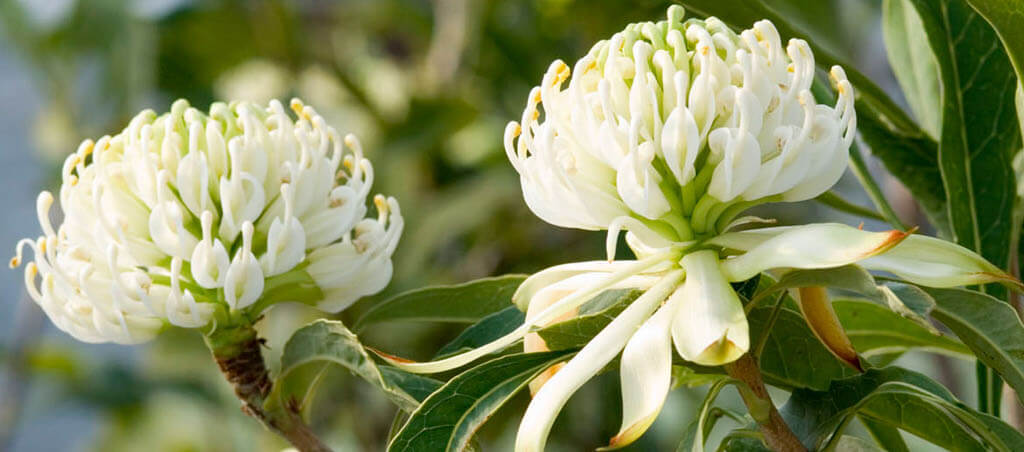
Inspiring artists and craftsmen
The Waratah truly is a most beautiful plant, especially when in flower and was described by early botanists as the ‘most magnificent plant’ in New Holland. Now symbolically instated as the floral emblem of NSW, the Waratah has become arguably the most famous and recognisable Australian plant.
Waratahs have been used for company logos and as architectural ornamentation, and the name has been used for towns, steamships and even football teams.
If you would like to make your own Waratah artwork, download our activity sheet.
The entire plant (waratah) lends itself to such a boldness of artistic ideas in all branches of Applied Art that it has few compeers amongst the representatives of the whole floral world.
R. T. BAKER, CIRCA 1915
Research
Due to the extreme variability of the Waratah, its commercial selection and development requires constant research. Dr Cathy Offord, a horticultural scientist based at the Australian Botanic Garden Mount Annan, has worked on the horticulture of Waratahs for many years and is continuing her involvement in the conservation and horticulture of Australian plant species.
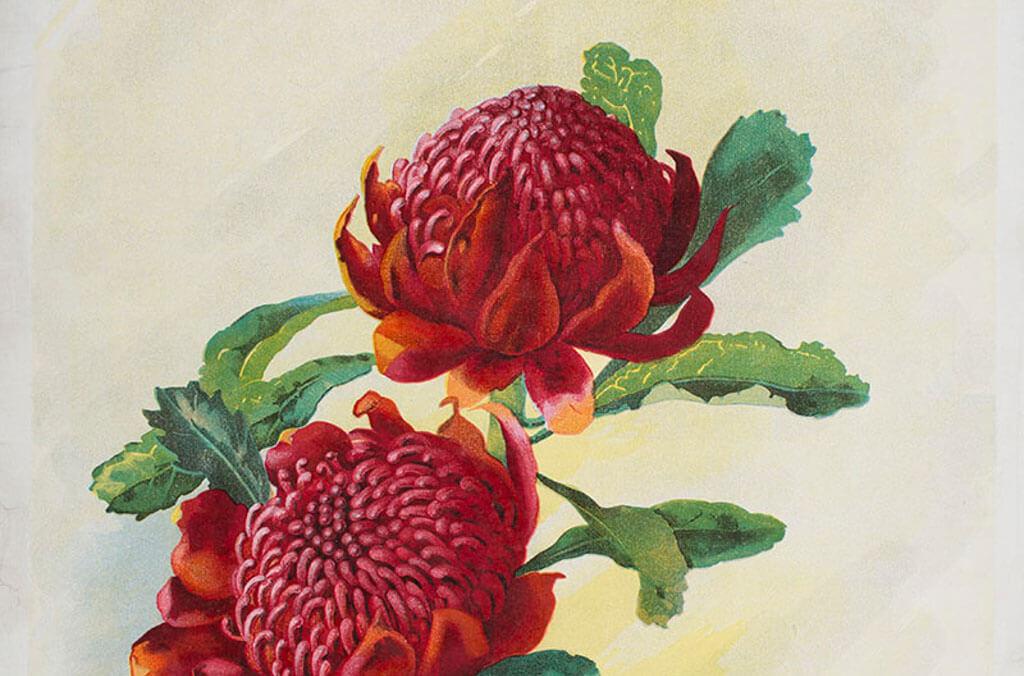
Waratah Wildflower print c1905 Margaret Flockton 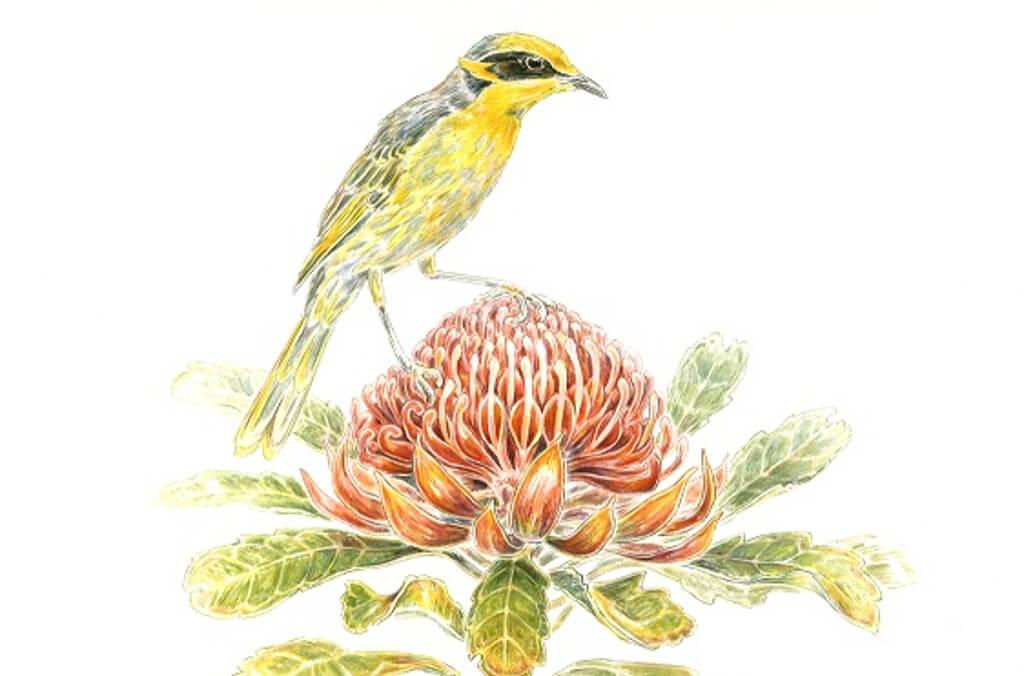
Waratahs, Wildflowers & Wildlife by Fioan Lumsden 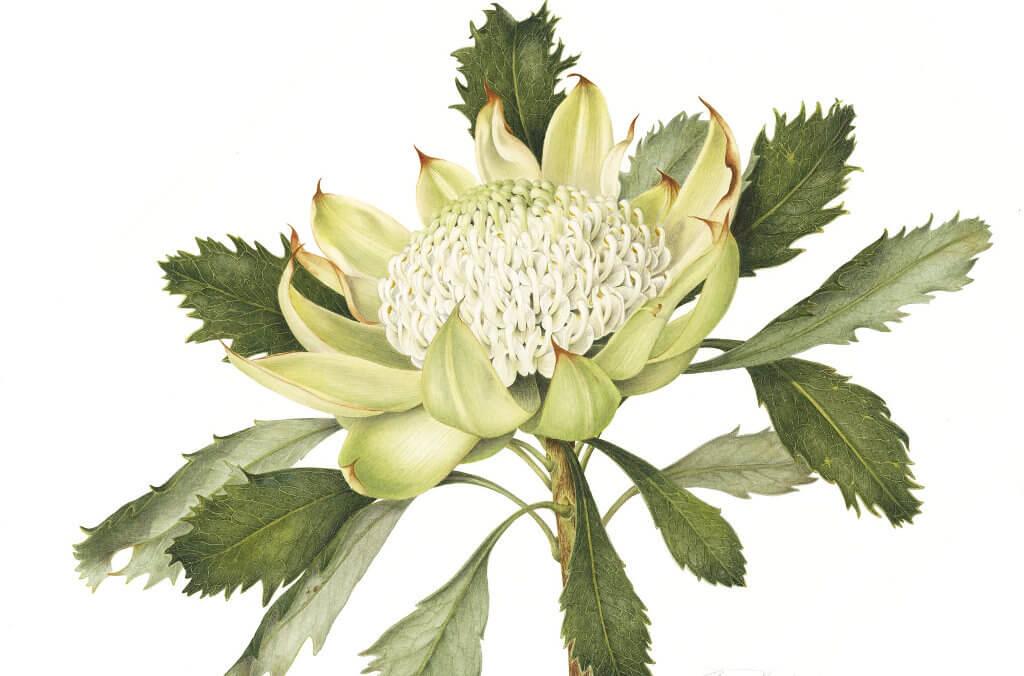
Waratah by Annie Hughes 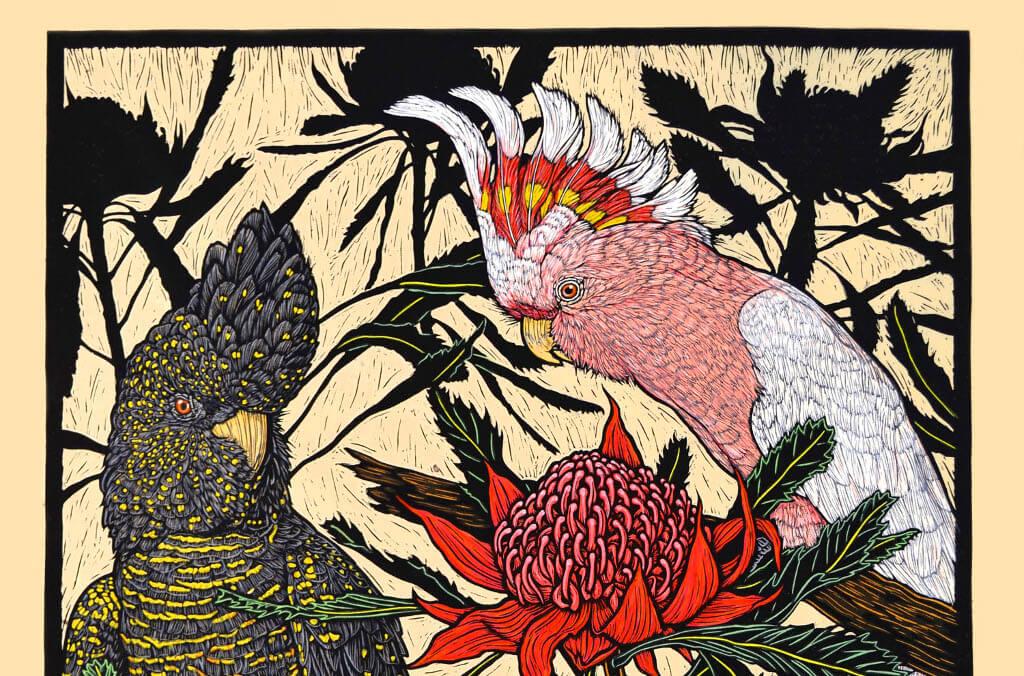
Cocakatoos & Waratah by Rachel Newling 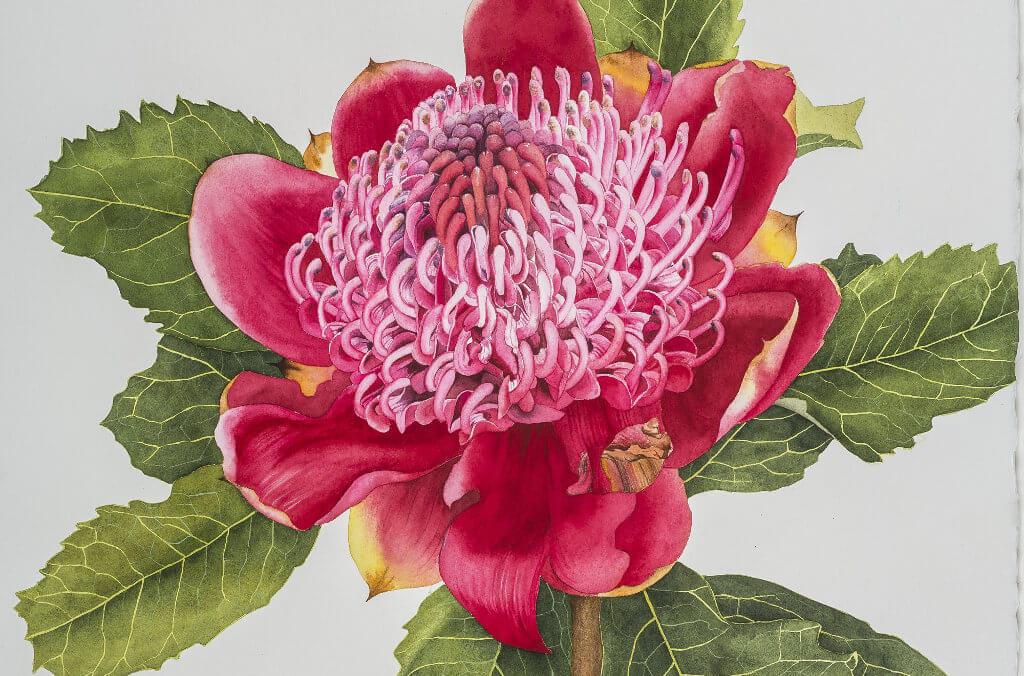
Waratah by Jane Blundell